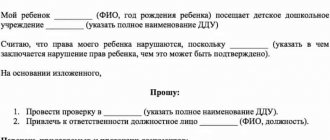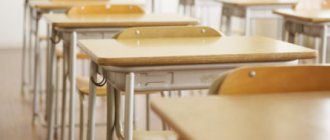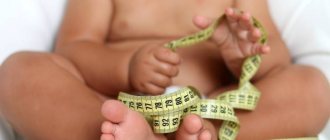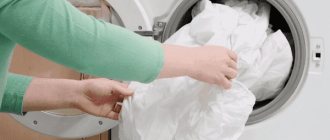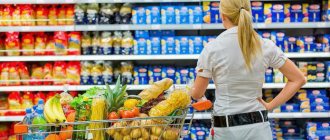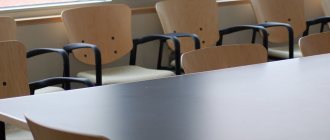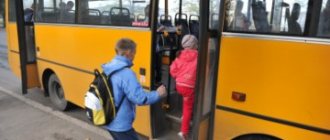Children attending preschool educational institutions require special attention from the administration of the organization. This fully applies to the child’s diet. To ensure that a minor receives vitamins and nutrients from food from the very beginning of his life, sanitary norms and rules are approved at the legislative level. All preschool educational institutions are required to comply with the regulations, and if violations are detected, the perpetrators are punished by higher government agencies. So, what do you need to know about SanPiN for nutrition in kindergartens ?
Legal basis.
The issue under consideration is regulated by Section XV of SanPiN 2.4.1.3049-13, approved by post. GGSV Russia dated 05.15.13 No. 26.
So, in accordance with paragraph 15.1 of the Requirements for the formation of a menu for preschoolers, food fully provides children with the needs of the body.
For this purpose, nutritional standards for dishes offered in groups have been adopted.
The range of dishes offered depends on the composition of the premises used for cooking and the presence of special refrigeration devices (refrigerators) in them.
Some preschool educational institutions practice delivery of food from factories and other catering organizations.
However, overpacking food is not allowed in accordance with established rules.
How many times should I wash my toys?
All products are carefully processed after purchase. Toys in a preschool educational organization require daily care.
Therefore, SanPiN recommends how to wash toys in kindergarten.
In nurseries this is done at least 2 times a day, in older groups - 1 time, after the pupils leave.
New toys must be washed for 15 minutes under running water and soap.
After this, the products are thoroughly dried and only then can the students use them. Rubber, polyurethane, foam latex toys must be thoroughly squeezed out after washing.
To regularly wash toys, use a soap or soda solution.
If a detergent is used, it must be of a safe composition.
Sanpin: quarantine in kindergarten.
Water temperature for washing toys.
When toys are used in a nursery group, the water temperature should be 50 degrees.
For products that older children will come into contact with, 37 degrees is sufficient. Toys are washed in specially marked containers designed for this purpose.
Doll clothes also require special attention. It should be washed when it gets dirty, but at least once a week.
After washing, clothes must be ironed. Children should only be given well-dried toys.
When processing soft toys, you must follow the manufacturer's recommendations.
They are usually hand washable. In addition, the products should be periodically knocked out to get rid of dust and dried in the sun.
SanPin for kindergarten. [274.00 KB]
Kindergarten menu for 14 days.
The nutrition of children is approved by the head of the preschool institution. The document is a menu designed for 14 days.
The list of dishes should contain proteins (up to 15%), fats (up to 30%), carbohydrates (up to 55%) in the total value of the diet.
In addition, when compiling this list, national preferences and the peculiarities of the territorial representation of cuisine, as well as the health of minors, are taken into account.
Drawing up an assortment of dishes requires a clear distribution of calorie content within the day.
Thus, separate meals must be planned taking into account its energy value.
More detailed information about the diet in kindergarten is given in the summary table below.
| Preschool visit form | Time | Approximate caloric value, % |
| Constant | breakfast | 20 |
| 2nd breakfast | 5 | |
| dinner | 30 | |
| afternoon tea | 15 | |
| dinner | 25 | |
| before bedtime | 5 | |
| 10 o'clock | breakfast | 25 |
| 2 breakfast | 5 | |
| dinner | 35 | |
| afternoon tea | 15 | |
| 12 o'clock | breakfast | 25 |
| lunch | 5 | |
| dinner | 35 | |
| afternoon tea | 15 | |
| dinner | 20 |
If children stay in a preschool educational institution for twelve hours, afternoon snacks and dinner can be replaced with a compacted afternoon snack with an energy value of 30-35 percent of the daily value.
The decision is made by the kindergarten administration taking into account the current situation.
What toys should be like according to SanPin.
Products are classified depending on their purpose, the age of preschool children and the material of manufacture.
By application they distinguish:
- didactic;
- technical;
- sports;
- musical, etc.
Items for games purchased for kindergarten must have a psychological and pedagogical conclusion about their appropriateness and safety.
They must not have a negative impact on the mental or behavioral health of pupils.
SanPiN specifies the basic requirements for products:
- They must not contain hard or sharp objects.
- Children under 3 years old should not be given toys made of fur, glass, leather, paper, etc.
- Products with a painted surface are not allowed, especially rattles.
- All toys must have a sanitary and hygienic certificate and documents confirming their safety.
- The design of products must be thought out in such a way as to eliminate the risk of damage.
According to SanPiN, soft toys in kindergarten are allowed only as teaching aids for pupils over 2 years old.
This is due to the fact that they are difficult to clean and accumulate large amounts of dust.
Musical toys that require contact with children's mouths for use are not recommended as they may carry bacteria.
If a preschool educational institution has such products, then their surface should be made of materials that are easy to disinfect.
Washing toys in a dhow according to the new sanpin
If there is a suspicion of a disease transmitted through food, then the dishes should, after cleaning and washing, be processed and disinfected in a solution of chloramine or bleach for 30 minutes, then thoroughly rinsed and dried. All utensils in the preschool educational institution must be marked in accordance with SanPin. Each pan should have an inscription for what dish it is intended for, the marking is applied with oil paint.
If the menu does not include fortified drinks, then vitamins are added to the third courses - compote or jelly, at a certain temperature. The SanPin for the pool in the kindergarten clearly states what rooms should be near the pool and what they should be equipped with, as well as what personnel are needed in the pool. (4 tablets per 10 liters of water) (20 ml per 980 ml water) indoors, hard furniture (30 grams per 970 ml water) (4 tablets per 10 liters.
We recommend reading: Where to go if you are in a wheelchair
water) (30 ml per 970 ml of water) Nika Neodez does not require (30 gr.
I work as a cook for 300 children in a kindergarten
timely provision of technical and other documentation necessary for work;
working conditions that meet labor protection and production safety requirements. proper quality of materials, tools, other means and items necessary to perform the work, their timely provision to the employee;
They said I couldn’t bear it, I went on sick leave. I want to know how many cooks there should be for 300 children.
An attempt to establish standards for the number of kitchen workers, including cooks, was made in 1985: Guidelines for organizing rational nutrition for students in secondary schools were approved by Order of the USSR Ministry of Trade dated December 26, 1985 N 315. This document contains in Appendix No. 5 the Approximate number of workers in single-shift canteens at secondary schools.
Read other lawyers' answers:
- How to Remove and Register a Car
- What is considered Refurbishment in Communal Apartments
- How to De-Register at the Speed Center
- How much do they pay for a Privatized Apartment?
- How to Return Household Appliances to the Store
Dear colleagues, I wish each of us to hold high the title of lawyer, unswervingly adhering to the principles of impartiality and objectivity!
HOW MANY COOKS ARE AVAILABLE IN A KINDERGARTEN WITH 11 GROUPS OF 23 CHILDREN IN EACH GROUP?
In preschool institutions with three or more nursery groups or groups with round-the-clock attendance of children, an additional 0.5 units of a cook position are established.
Ensures high-quality sanitary condition of premises, equipment, and inventory. Note. Performing auxiliary work may be entrusted to an auxiliary (kitchen) worker.
Scope of work. Performing auxiliary work in the production of dishes and culinary products. Peeling and finishing of potatoes, fruits, vegetables, fruits and berries before and after washing them using knives and other devices. Sorting of greens, fruits, vegetables, berries, potatoes. Removal of defective specimens and foreign impurities. Washing vegetables, rinsing them after cleaning, finishing. Slicing bread, potatoes, vegetables, herbs. Defrosting fish, meat, poultry. Gutting of fish, poultry, game. Cutting herring, sprat. Processing of by-products, etc.
According to the Standards for the number of employees for the “Preparing baby food” function, there are 8.5 employees per 235 children
How to automate the keeping of a dish processing log?
To do this, it is convenient to use the software module “Health Protection of Employees and Children” of the System for Monitoring the Activities of an Educational Institution (SKDOU). It contains more than 20 logs and allows you to monitor the coronavirus infection COVID-19 in order to reduce the incidence of children and employees.
For example, look at the video on how to work in the system with a dish processing log:
You can try the program for free here.
Author of the article: Lidiya Sitnikova
A little history: advice from grandmothers on labeling things
Kindergarten is not a new phenomenon; our parents and even our grandmothers went there. In conditions of total shortage in the Soviet Union, there was no need to talk about choosing store-bought means of marking things. The imagination and skillful hands of our grandmothers had to work here. Let's talk about several life hacks from the older generation.
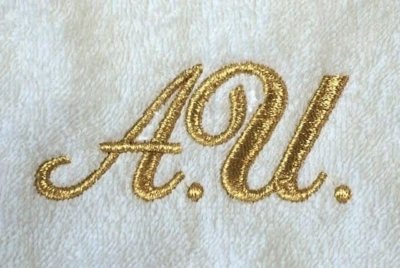
- Signing things with a permanent pencil . One of the easiest ways to sign things. The first and last name, or some simple design (flower, circle, etc.) is written on the clothes with a permanent pencil. Withstands several washes, then needs to be renewed.
- Sewing on a piece of fabric . A piece of bright fabric is sewn on as an identification mark, which the child is asked to remember. The disadvantage is that sewing to each item takes a lot of time, and some items (shoes, comb) cannot be sewn on.
- Embroidering initials . The first letter of the first and last name is embroidered on the clothes. Convenient for educators, but children who cannot read will have to remember the initials like a picture. Quite a viable method, but very time consuming. Again, sandals and a hairbrush can’t be marked like that.
How to mark bedding for kindergarten: embroidery
Embroidering a mark on bed linen is the easiest, but also the most time-consuming: you buy floss threads, draw an outline on the fabric (you can use a piece of dry soap or a simple pencil) and embroider what you want in any way available to you: you want it with satin stitch, you want it with a cross stitch (putting canvas on it), you want it with a seam "forward with a needle." The embroidered marks hold well, but this is quite a labor-intensive task, requiring patience and the ability to “hold a needle” from the mother. In addition, this method of marking is suitable if you have a complex design with many small details, for example, a fire truck.
SanPin for kindergartens with changes for 2021
Clean cutlery is stored in pre-washed cassettes in a vertical position with handles up. If cases of infectious diseases occur, the dishes are disinfected (disinfected) in the established manner. DISHES ARE STORED IN THE BUFFET in compliance with sanitary and hygienic requirements for the treatment of rags. Rags are soaked in a disinfectant solution, then washed in at the end of the working day with a 2% soap-soda solution, rinse, dry and store in a special labeled container. 3% “Samarovka” 60 minutes - 30 ml.
As you know, for the younger generation attending kindergarten, meals are provided 5 times a day, both according to SanPiN and according to cards. The situation makes it possible to balance nutrition, gradually promoting acceptable optimal development of the child in such valuable young years. Regarding nutrition in this case, you need to create a 10-day menu, differing in dishes, certified by the management of the kindergarten.
Relatively recently, technological maps were finalized, and innovations appeared there. The main feature of the dishes is their positive impact on the development, moreover, the growth of the younger generation. In general, such a technological map is designed for 280 different dishes daily, taking into account the recommended elements that must be steadily supplied to the child’s body. In particular, the technological map also assumes:
- a written recipe for dishes, how to prepare and serve them according to GOST;
- norms, rules for preserving a certain product;
- a large list of nutritional characteristics of products, as well as dishes made from them;
- list of vitamins and elements that meet food standards;
- complete technology for preparing all dishes step by step, taking into account age categories.
p 2.8
: Now the names of the dishes in the menu should correspond to the names of the dishes in the technical and technological maps.
p 2.10
: Hot and cold water in a catering establishment must meet the requirements for drinking water.
p 2.24
: Requirements have been established for conducting master classes, including for children.
p 3.5.1
: It is prohibited to sell ready-made meals that have been on hand for more than 3 hours.
Educators need to reduce the number of children in each group. As a result, you will get more groups, but each child will have a personal space of 1 sq. m. meters. The exact number of children in the group depends on the size of the rooms.
If possible, you need to maintain a distance of 1.5 meters between children and teachers. It is recommended to move some classes outside, if the weather permits. This is especially true for sports exercises, modeling and drawing.
Important! Each group should study in the same room. Movement around the garden should be minimized. Before a new group arrives in the office, they do a superficial cleaning.
Children from different groups should not intersect. To do this you need:
- Cancel mass events - performances, concerts, competitions;
- Change the class schedule so that groups have breaks at different times;
- Do not combine children into an evening group;
- Avoid joint indoor and outdoor activities.
The announced measures to combat coronavirus require investment and effort from the management of kindergartens. One cleaner or medical worker cannot cope with these tasks; responsibilities must be distributed among the team. It is advisable to give each employee a reminder that will remind him of the new rules.
Daily responsibilities can be distributed as follows:
- The cleaning lady washes and disinfects surfaces throughout the kindergarten 3 times a day.
- The security guard does not let strangers and parents through.
- The nurse measures the children's temperature 2 times a day. She is also screening children and staff for coronavirus symptoms. Every 3 hours it disinfects indoor air.
- The teachers ventilate the rooms every 2 hours. They monitor the well-being of children, take them to wash their hands every 3 hours and monitor the implementation of basic rules of personal hygiene. Educators should know the symptoms of coronavirus.
- The cooks wear masks and gloves. Every 3 hours they disinfect work surfaces and utensils.
- The administrative assistant monitors the availability of disinfectants for cleaners, masks and gloves for kitchen workers, and antiseptics throughout the kindergarten.
Correct organization of Rospotrebnadzor rules will help reduce the spread of coronavirus and avoid problems during sanitary inspection of the kindergarten. We urge you not to skimp on your children’s health!
Professional retraining
Pedagogy and methods of preschool education
From 5,500 rub.
More details
Training
Pedagogy and methods of preschool education
From RUB 2,100
More details
Vocational training under the vocational training program
Junior teacher
From 4,100 rub.
More details
Professional retraining
Management in a preschool educational organization
From 5,500 rub.
More details
Training
Features of the organization of preschool education in a difficult sanitary and epidemiological situation
From RUB 2,200
More details
A kettle for drinking water is treated with steam in the catering unit in the morning, washed with Progress in the evening like dishes, the horn is washed with a brush, the kettle is rinsed and dried upside down.
Responsible:
Educator: “__”_____________201_g. _____________ /___________________________/
Junior teacher: “__”____________201_g. _____________ /___________________/
Educator: “__”_____________201_g. _____________ /___________________________/
Junior teacher: “__”____________201_g. _____________ /___________________/
Educator: “__”_____________201_g. _____________ /___________________________/
Junior teacher: “__”____________201_g. _____________ /___________________/
WASHING THE TOILET ROOM
Dust from surfaces in the toilet is wiped with a 0.015% solution of Purzhavel or Deo-chlor (1 tablet per 10 liters of water) with a special rag from a basin marked “dust in the toilet”.
The floor in the toilet is washed with a 0.015% solution of “Purzhavel” or “Deo-chlor” (1 tablet per 10 liters of water) with a special rag in a black robe after each visit to the toilet by children in the younger group and 2 times a day in other age groups.
Rags are disinfected in a 0.015% solution of Purzhavel or Deo-chlor (1 tablet per 10 liters of water) for 30 minutes at the end of the day. The robe is changed once a week or when soiled.
Kvacha for toilets are stored in a 0.1% solution of “Purzhavel” or “Deo-chlor” (7 tablets per 10 liters of water). A nurse prepares a solution for kvachas. The solution in kvacha is changed daily. At the end of the day, the kvachas are dried.
The disinfectant solution is stored in a dark container with a tightly closed lid for no more than three days. Sanitary equipment must be disinfected regardless of the epidemiological situation. Sinks and toilets are cleaned 2 times a day with disposable rags and scourers, respectively, using cleaning agents and disinfectants.
Walls, surfaces and doors on the toilet side above 20 cm from the floor are washed from a basin marked “dust in the toilet”; below they are washed from a bucket marked “toilet floor”.
Windows outside and inside are washed as they become dirty, but at least 2 times a year (spring and autumn).
Toilet seats, flush barrel handles and door handles are washed with warm water and soap or another detergent - daily. The pots are washed after each use using ruffs or brushes and detergents. Baths, sinks, and toilets are cleaned twice a day with brushes or brushes using detergents and disinfectants.
During quarantine
for kvachas, a 0.2% solution of “Purzhavel” or “Deo-chlor” is used (14 tablets per 10 liters of water).
Before admitting a minor to kindergarten, it is necessary to obtain a medical report, which will become the basis for assigning the child to the group. The absence of a document gives the head of the organization the right to refuse to enroll a minor in the list of pupils.
Employees of the organization (educators) are responsible for the daily admission of children to the group. They examine minors independently or with the participation of a medical professional.
| № | Child's age | Duration of sleep per day | Number of naps during the day |
| 1 | From 3 to 7 years | 12 hours | 1 time up to 3 hours |
| 2 | From 1.5 to 3 years | 12.5 hours | 1 time for at least 3 hours |
| 3 | From 1 to 1.5 years | 12.5 hours | 2 times up to 3.5 hours |
The duration of a walk in kindergarten is at least 3–4 hours a day. Time may vary depending on weather conditions or is divided into 2 walks.
Meals in kindergarten are organized depending on the time spent in the group. If the child is in the garden full day (10 - 12 hours), he needs to be fed every 3 - 4 hours. For pupils of short-stay groups (no more than 5 hours), one meal is provided.
Preschool teachers should conduct developmental activities with children. SanPiN fixes their duration. The duration of classes depends on the age of the children.
| № | Children (age) | Continuous lesson time (min) | From 8.00 to 12.00 (min) | From 15.00 to 19.00 (min) |
| 1 | From 6 to 7 | 30 | 90 | 30 |
| 2 | From 5 to 6 | 25 | 45 | 25 |
| 3 | From 4 to 5 | 20 | 40 | – |
| 4 | From 3 to 4 | 15 | 30 | – |
| 5 | From 1.5 to 3 | 10 | 10 | 10 |
To improve the health of minors, physical education lessons should be conducted during the day in kindergarten. They include a massage and a list of exercises. The duration of morning exercises depends on the age of the child.
Physical education lessons are held 3 – 4 times a week. For minors from 5 to 7 years old, one lesson must be held outside.
The duration of gymnastics depends on the age of the children and coincides with the time of continuous classes. Additionally, as part of the recovery, it is possible to organize hardening lessons.
I work as a cook for 300 children in a kindergarten
timely provision of technical and other documentation necessary for work;
working conditions that meet labor protection and production safety requirements.
But at present, no special standards for the number of cooks in the school canteen have been approved. The staffing level of a canteen is determined by its head in accordance with the structure of the organization, its functions and levels of management. As a general rule, employers are free to determine both the staffing levels by position and profession, and the number of employees performing a particular job function.
An attempt to establish standards for the number of kitchen workers, including cooks, was made in 1985: Guidelines for organizing rational nutrition for students in secondary schools were approved by Order of the USSR Ministry of Trade dated December 26, 1985 N 315. This document contains in Appendix No. 5 the Approximate number of workers in single-shift canteens at secondary schools.
Currently, no mandatory standards have been established, so this issue is resolved by the administration of the educational institution. But according to Article 163 of the Labor Code of the Russian Federation, the Employer is obliged to provide normal conditions for employees to fulfill production standards. Such conditions include, in particular:
SanPiN for a junior teacher in a preschool educational institution
Contents of the article: All duties of junior educators are regulated by the job description and SanPiN standards:
- The junior teacher works to provide psychologically and physically comfortable conditions for children, protecting their lives and health.
- During breakfast, lunch and dinner, the teacher helps the pupils eat, and before that helps with the distribution of food.
- During the “quiet” hour, she helps preschool children change clothes, go to bed, makes sure there is silence and that nothing disturbs the children’s sleep, and after that, she helps the kids get dressed and get ready for classes.
- The second most important task of the employee is to provide all possible assistance to the teacher in the implementation of the educational process.
- The junior kindergarten teacher is responsible for maintaining the premises, ensuring cleanliness in the rooms and bathrooms (sanitizing dishes and toys, changing linen, wet cleaning).


